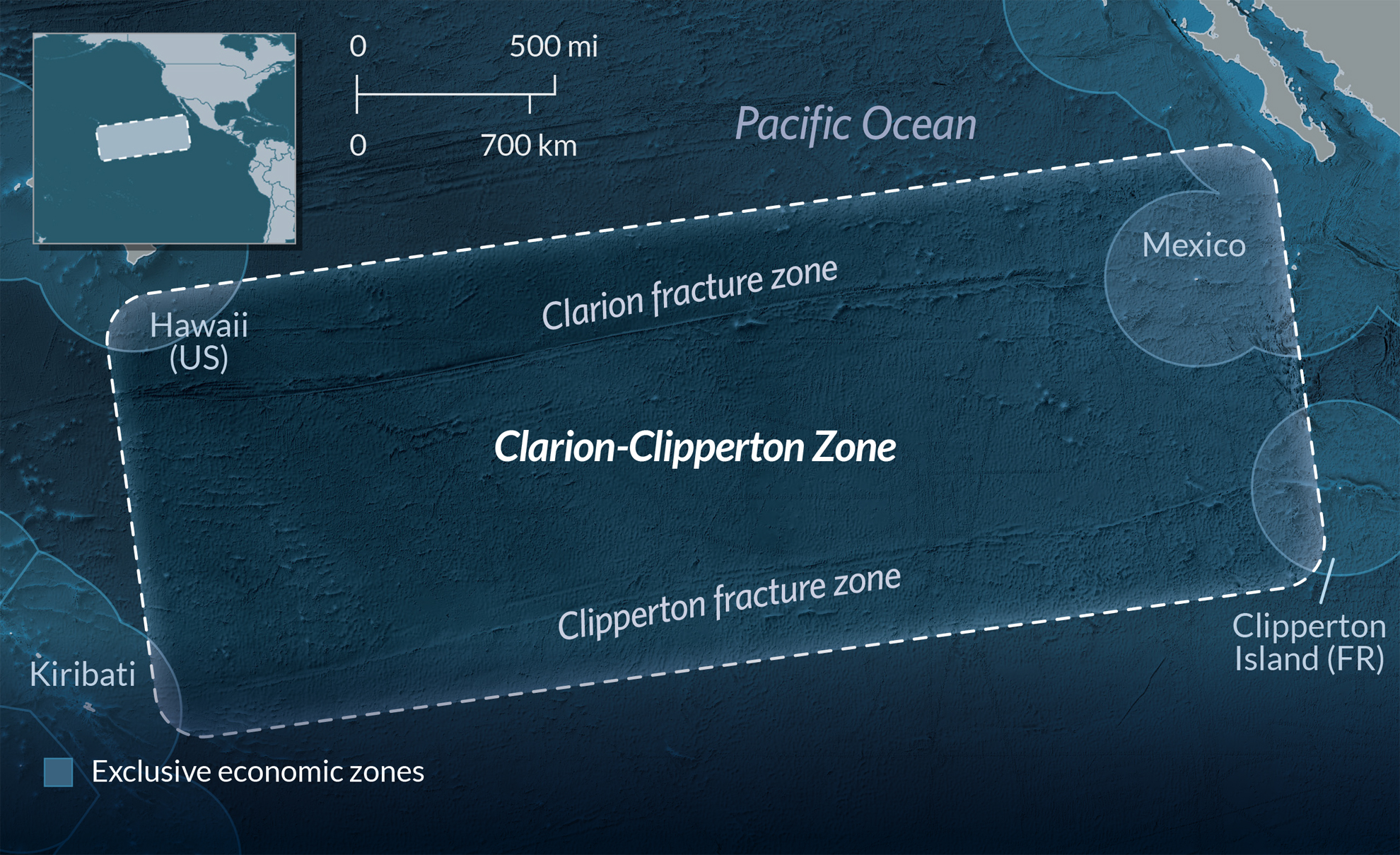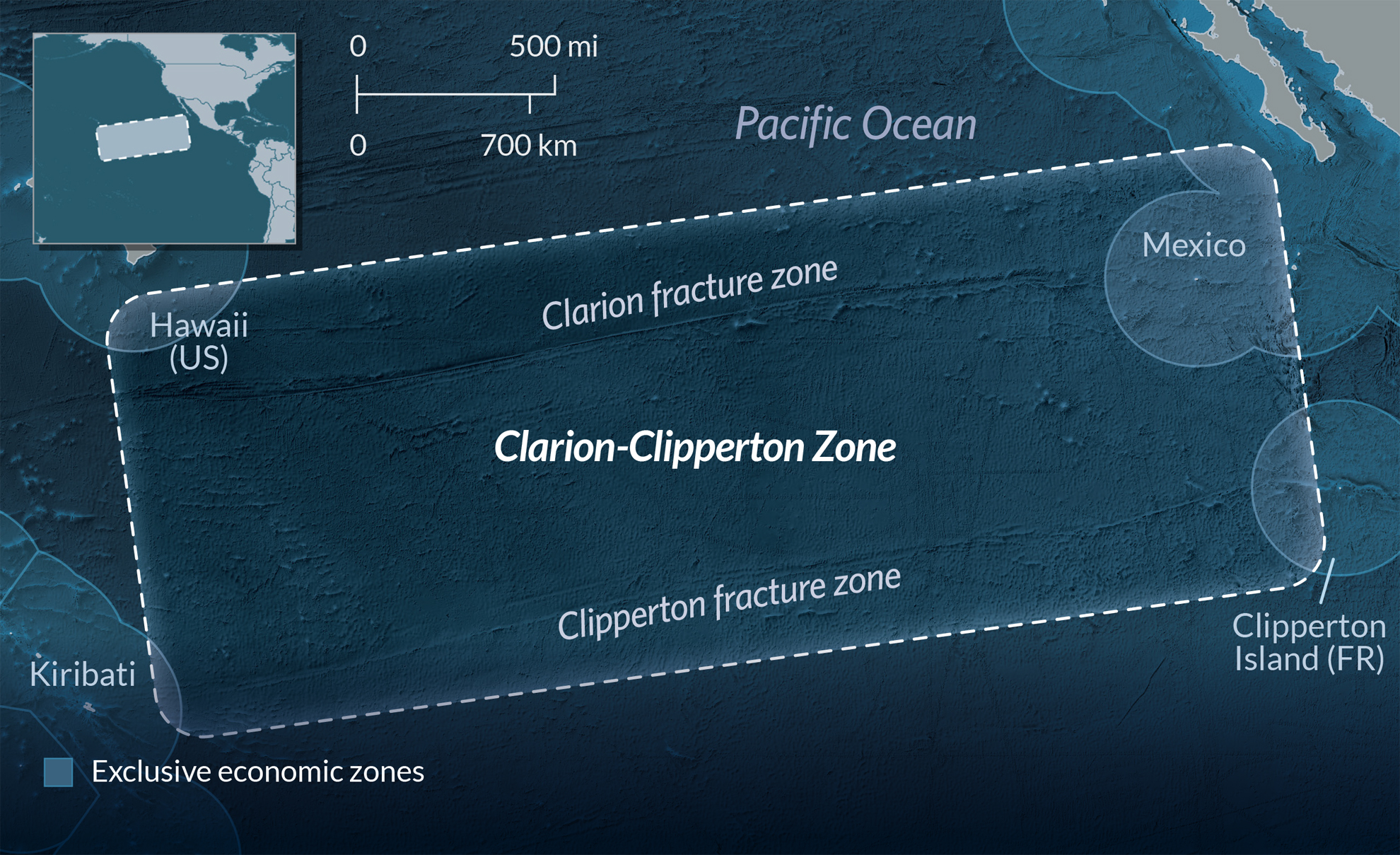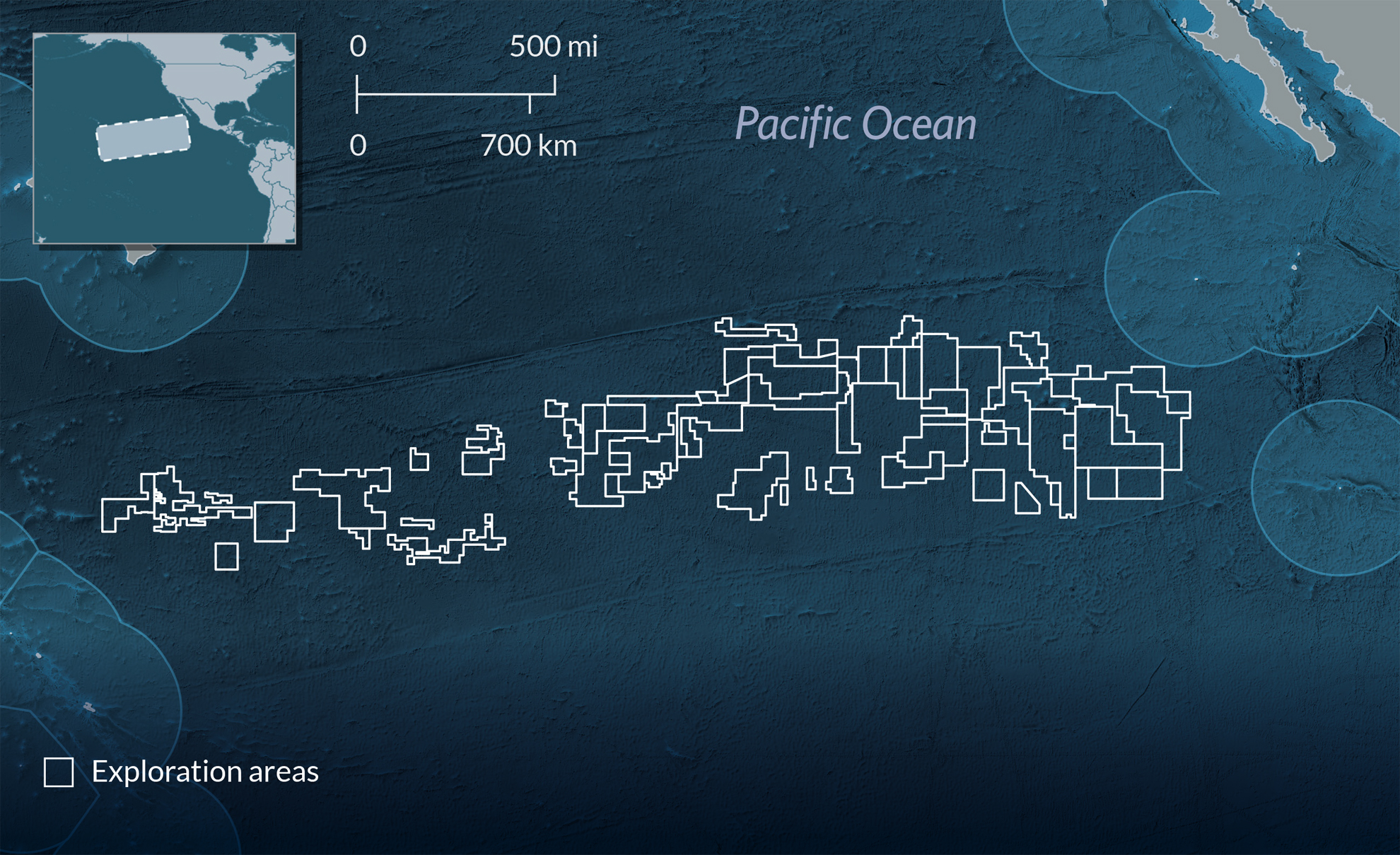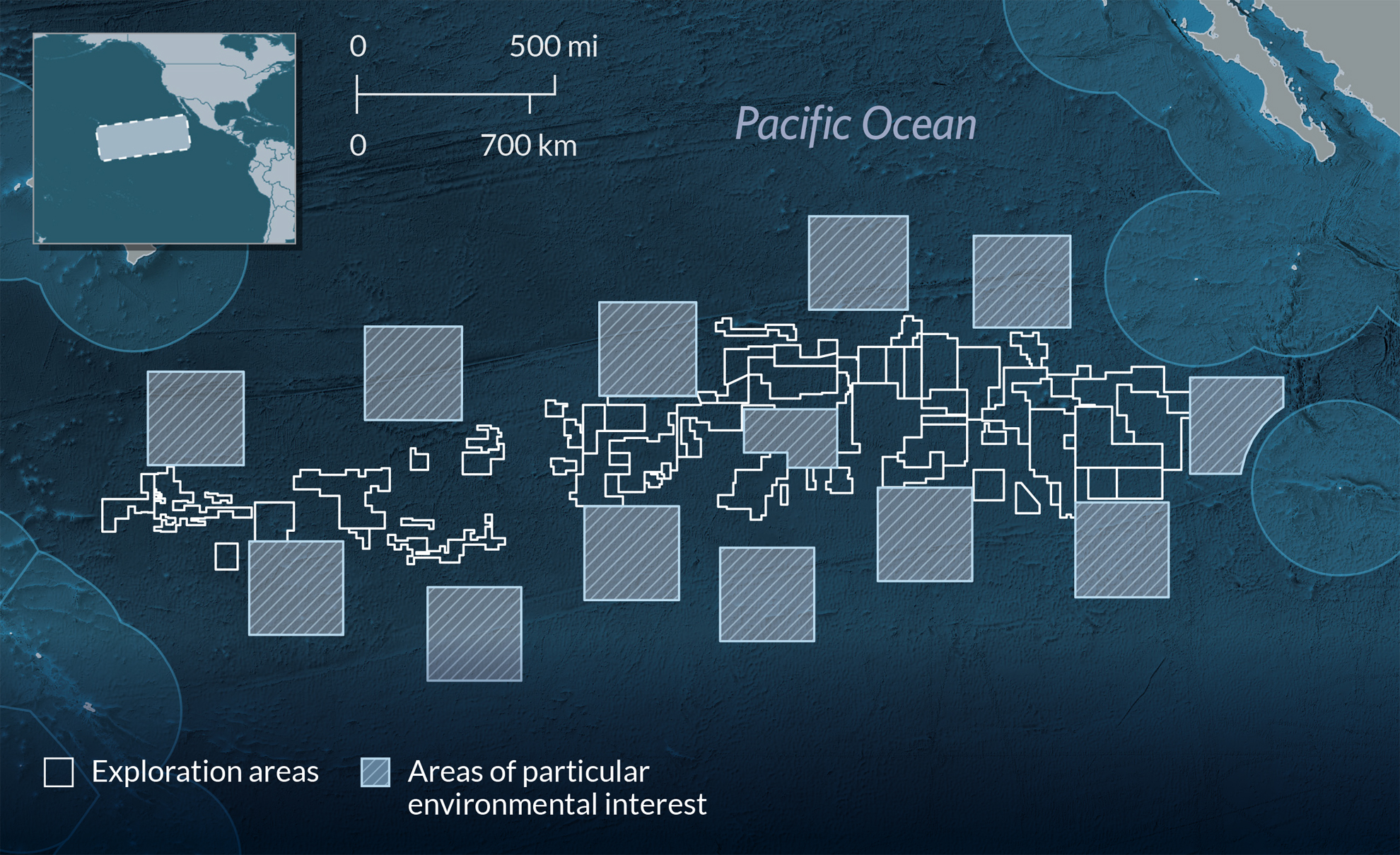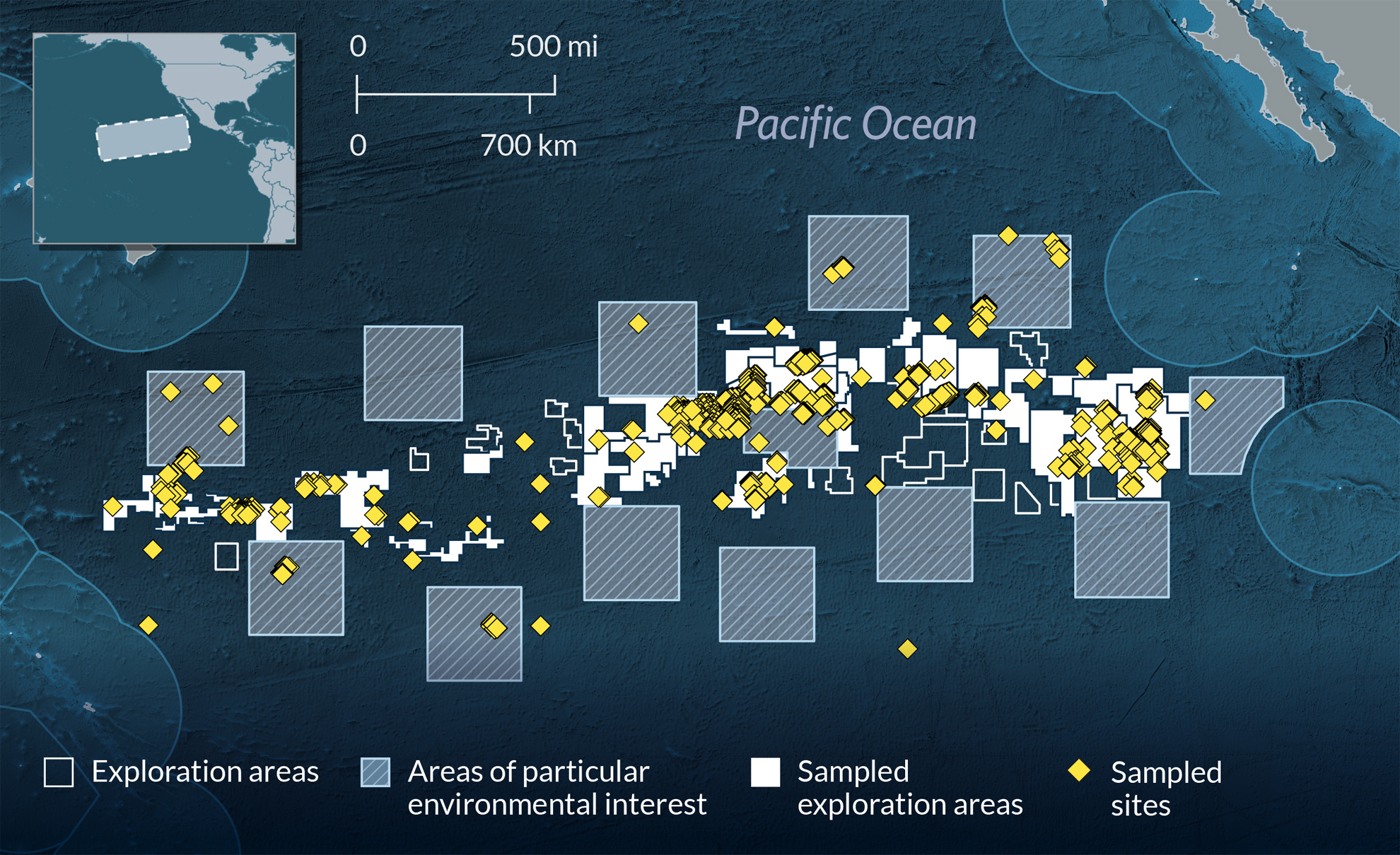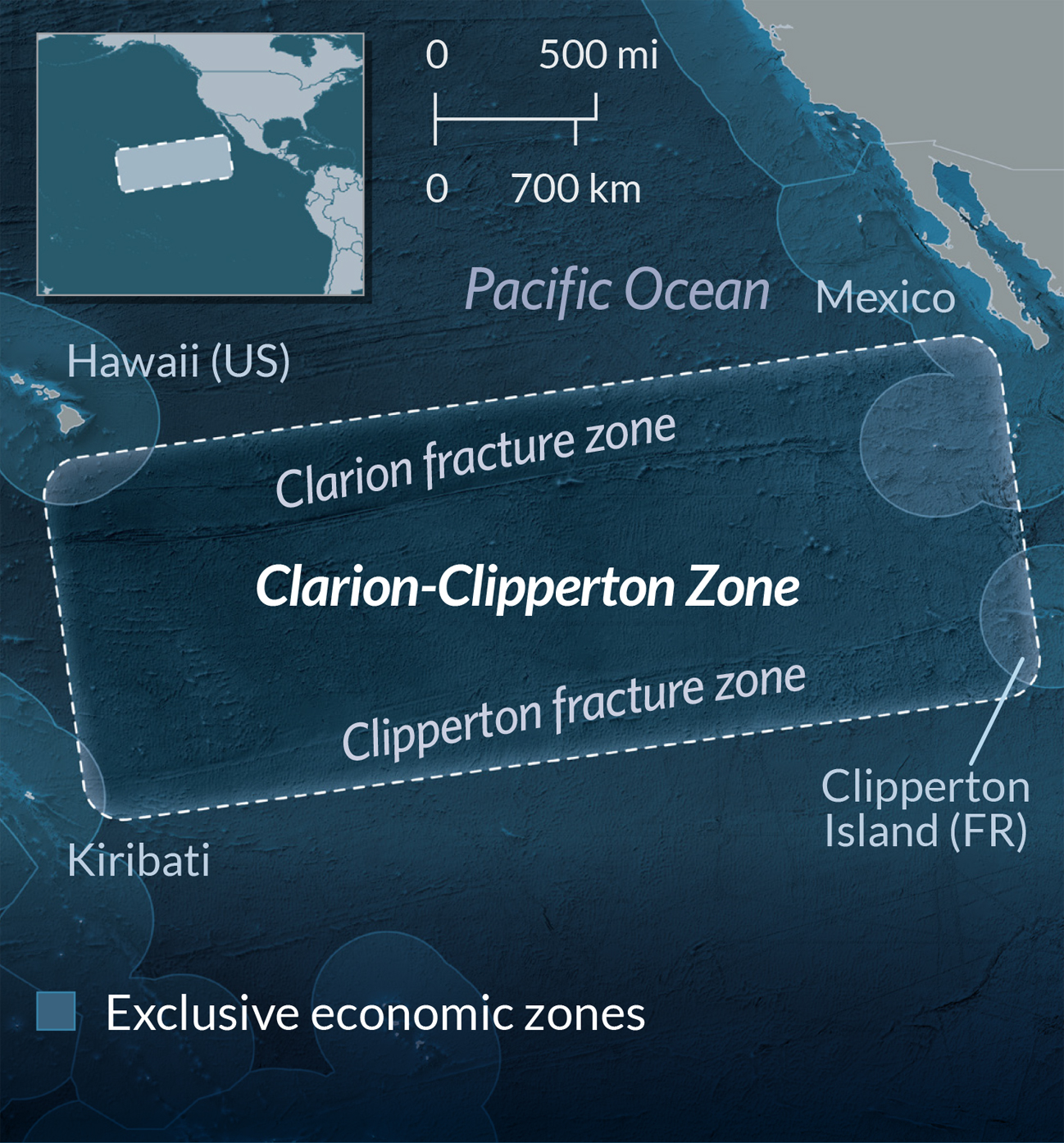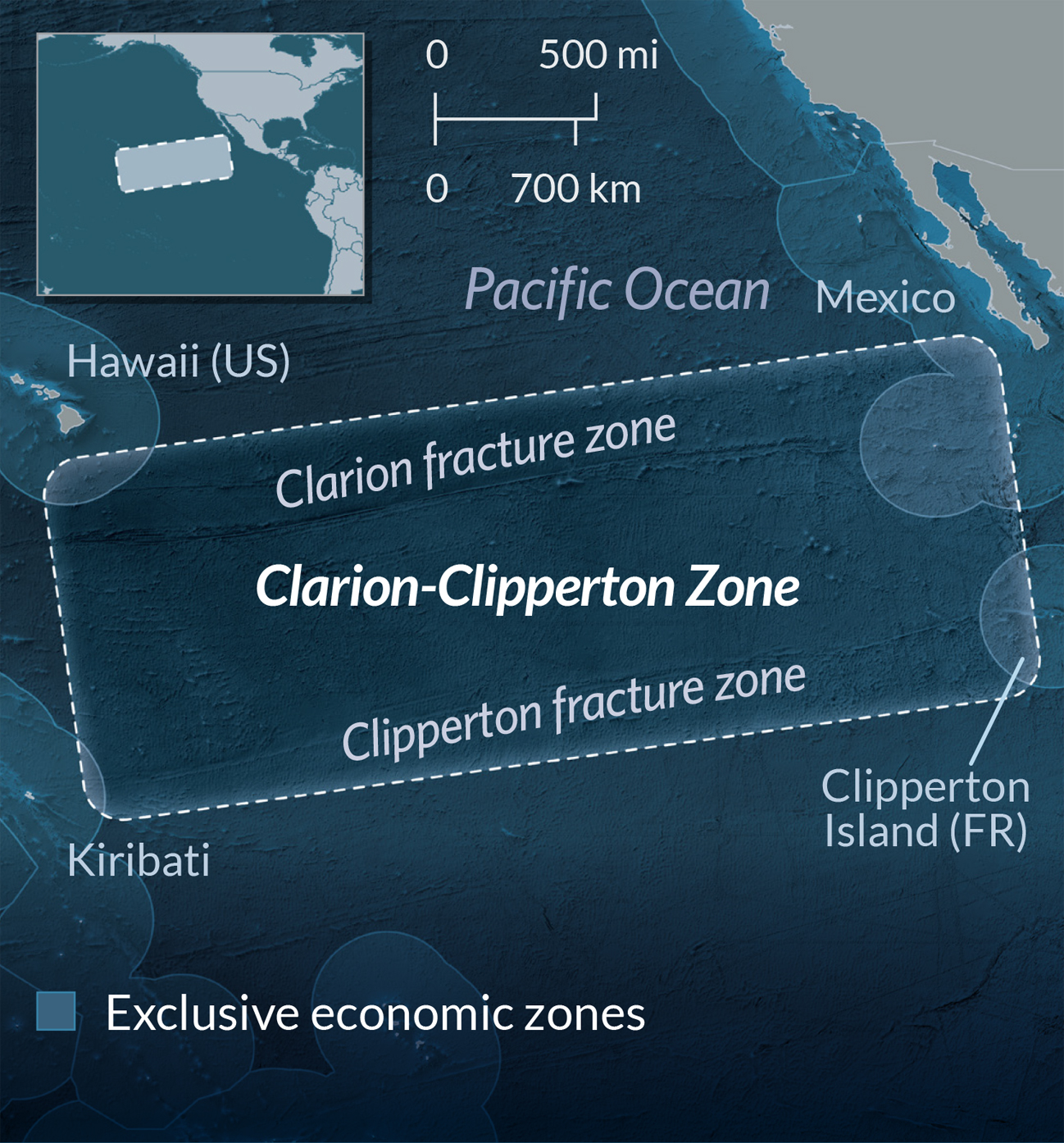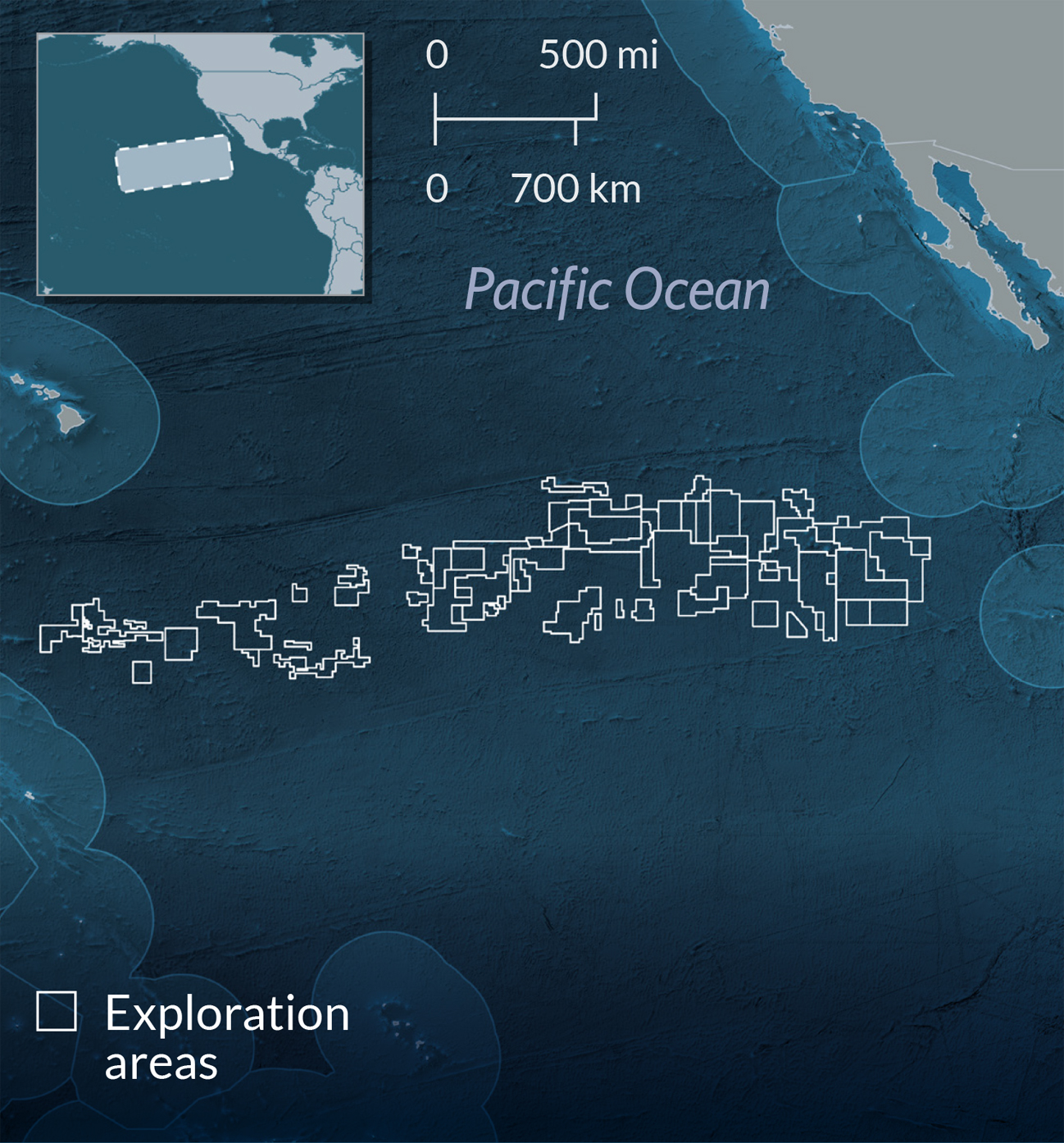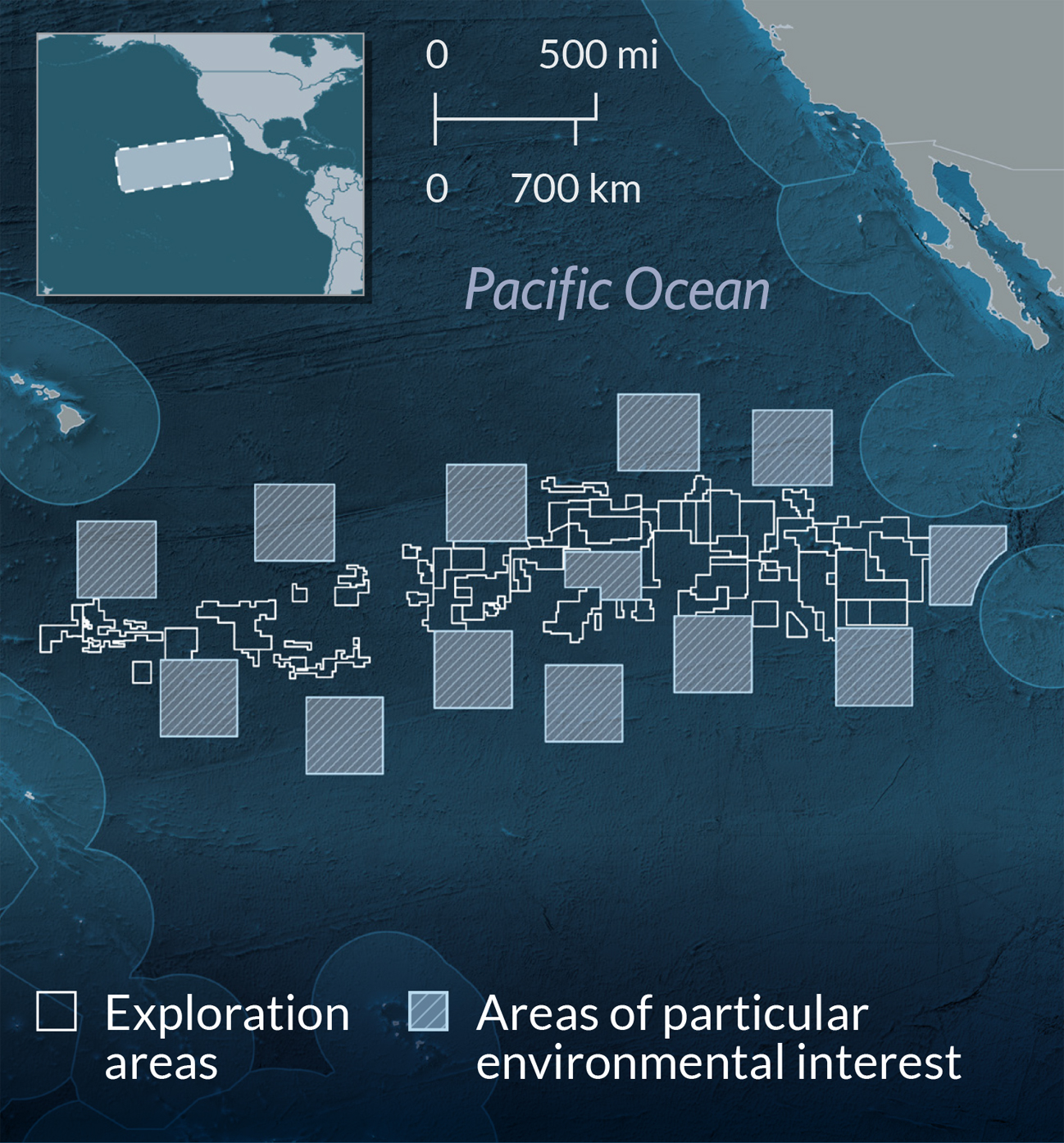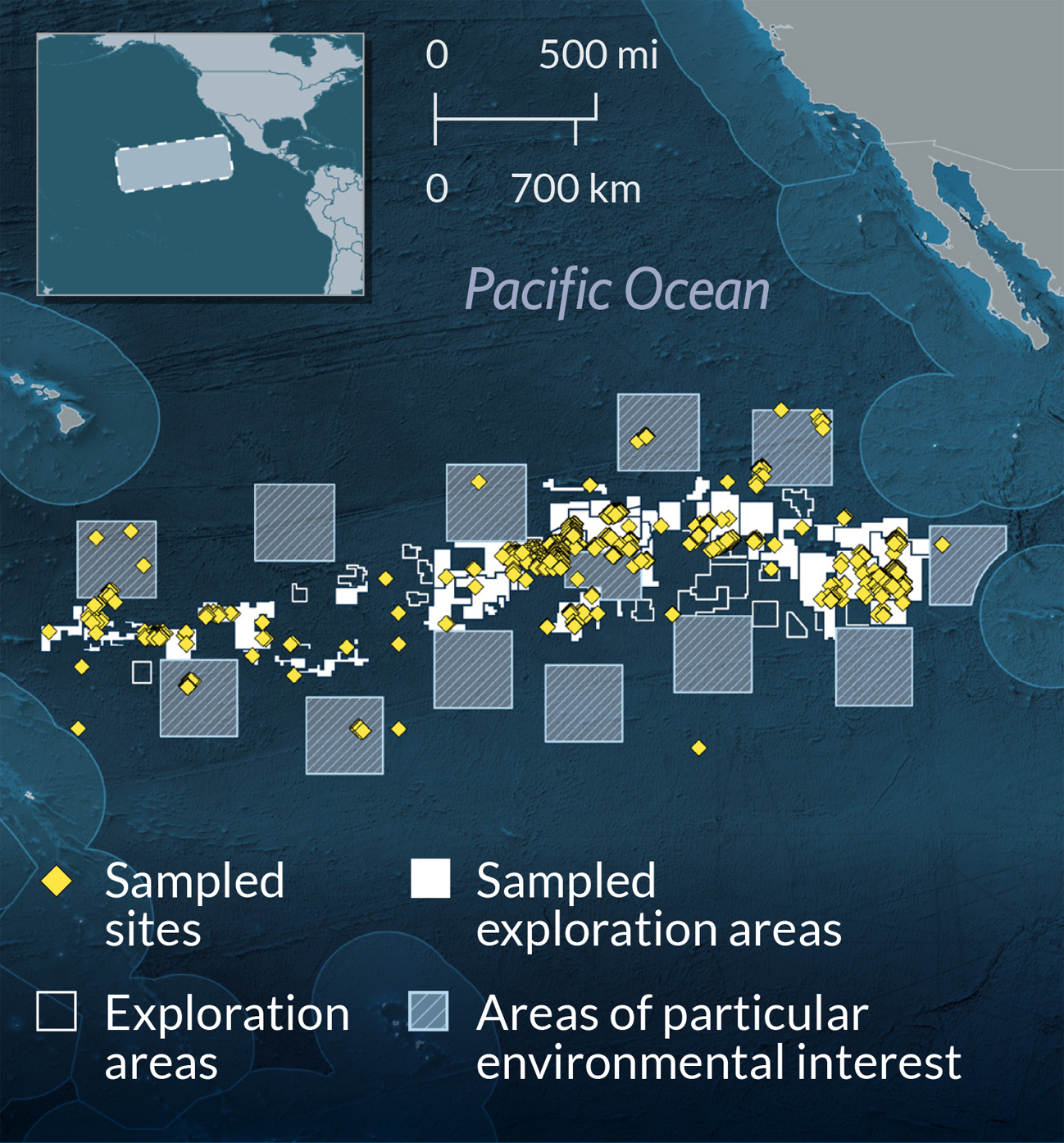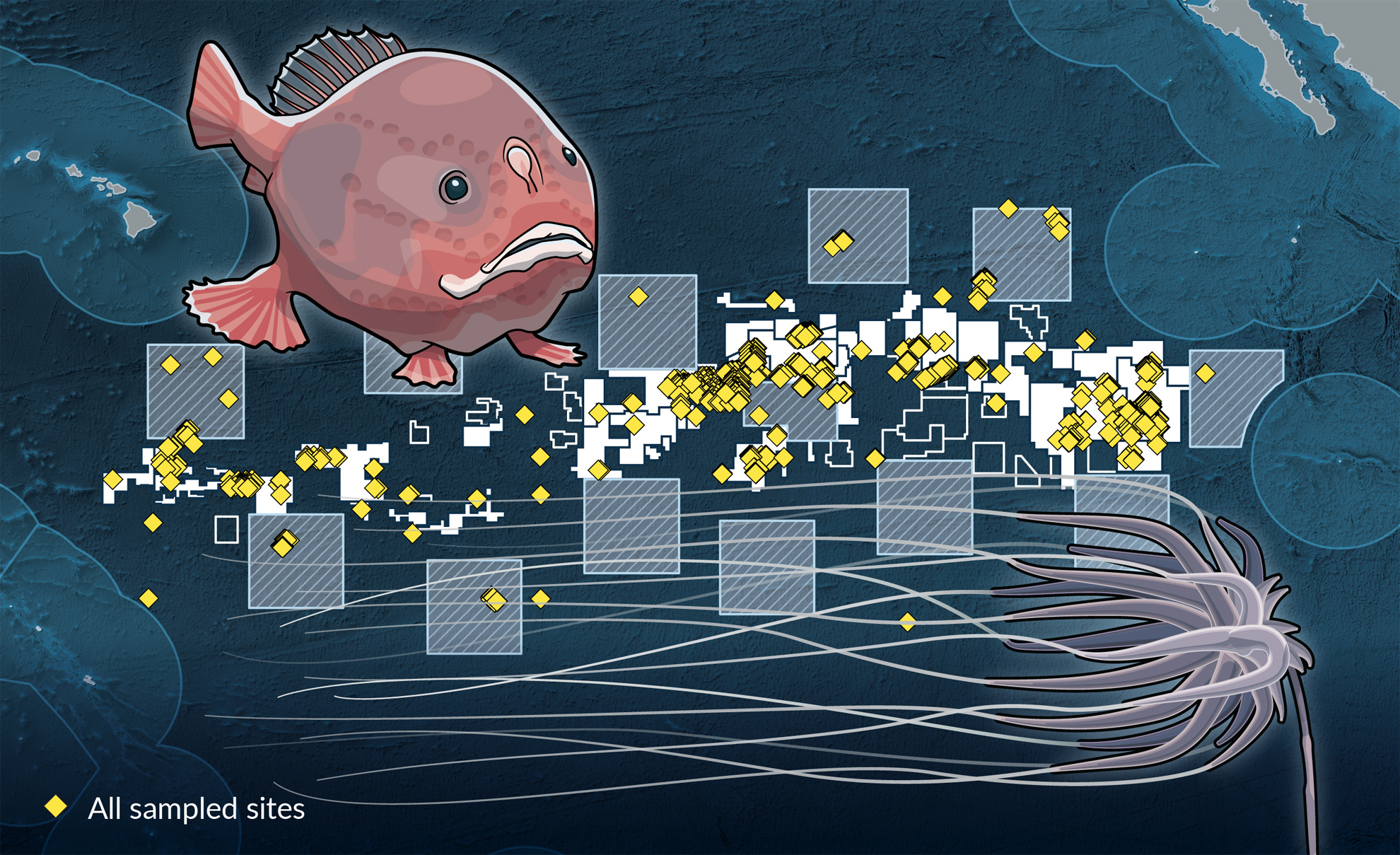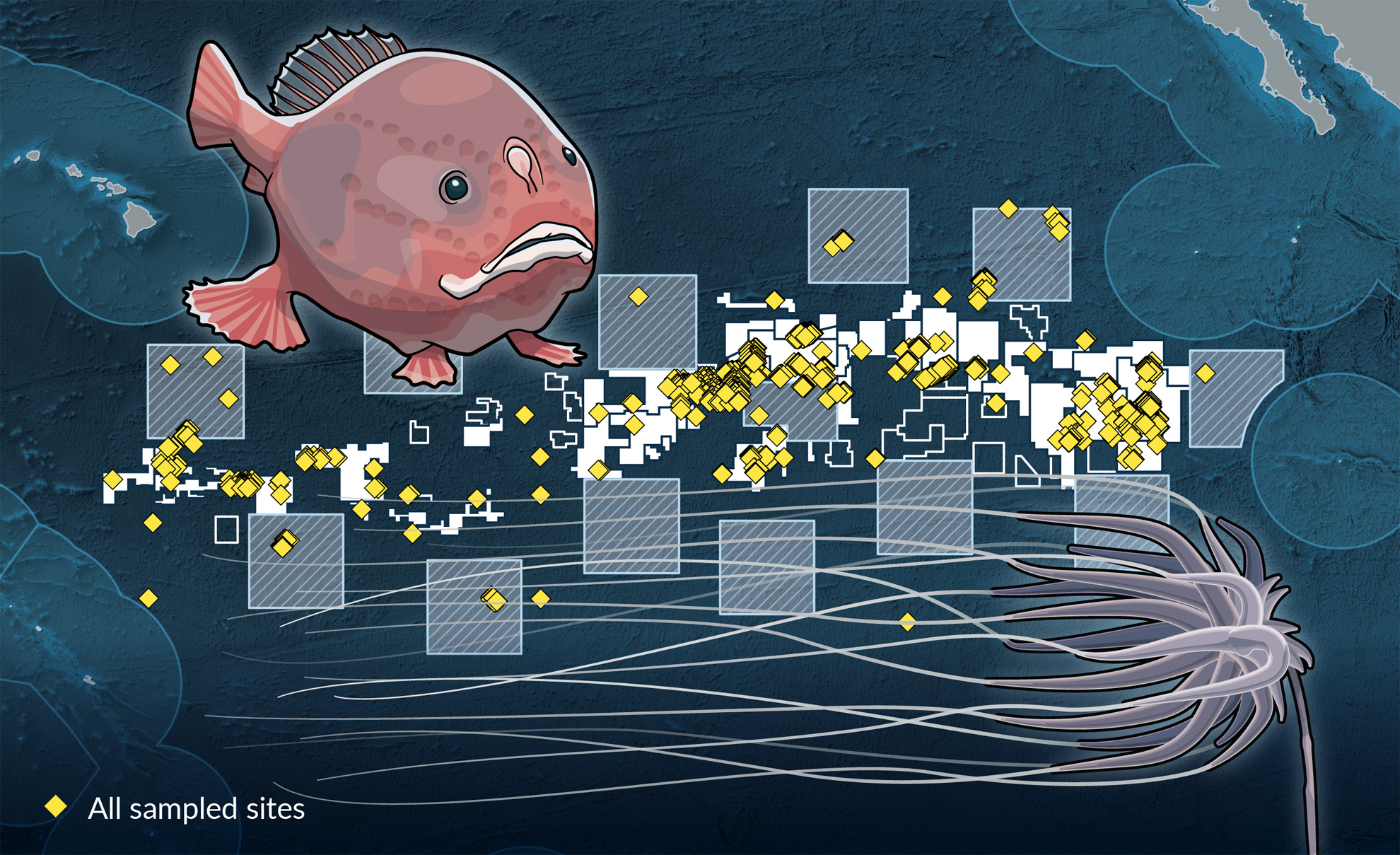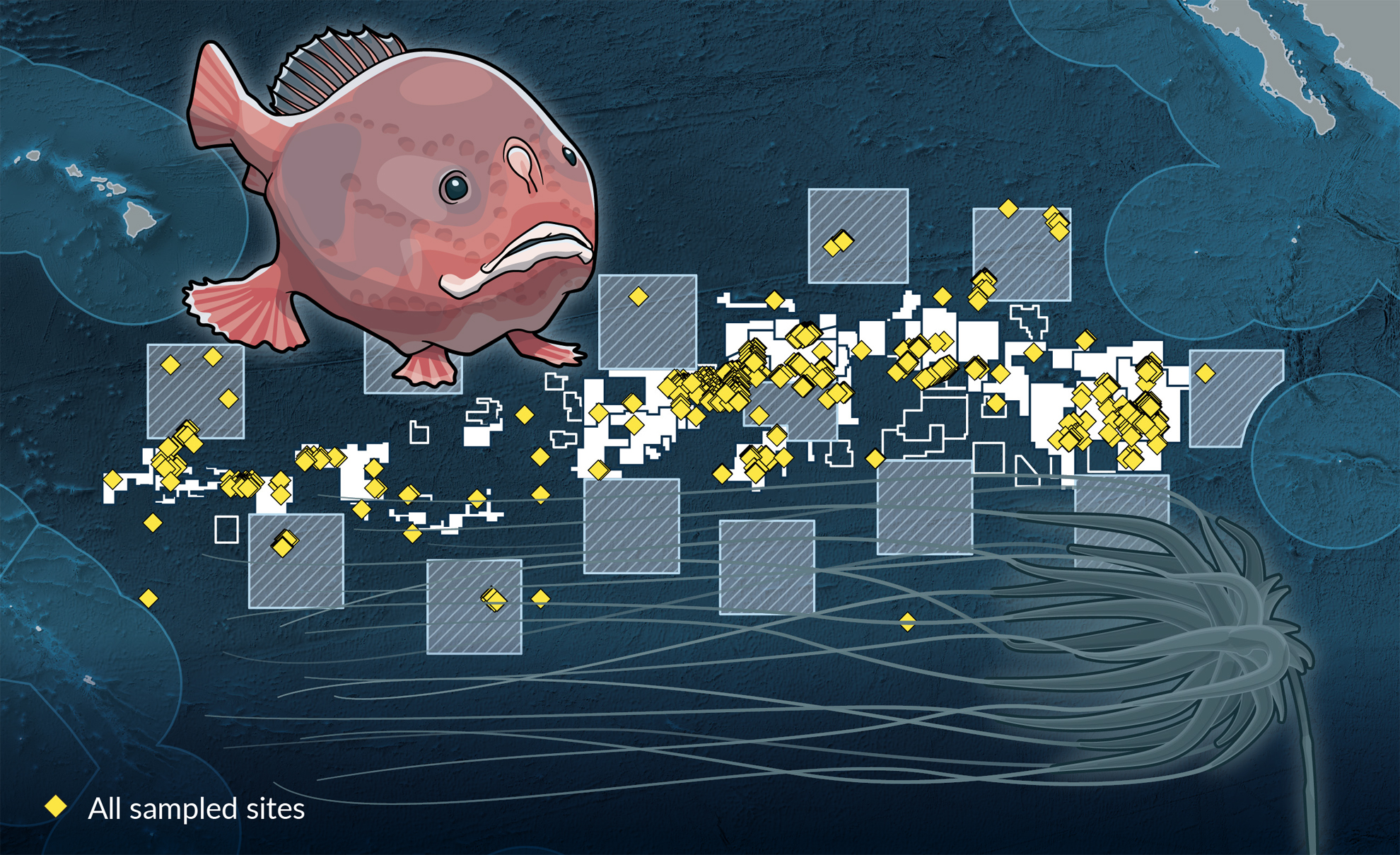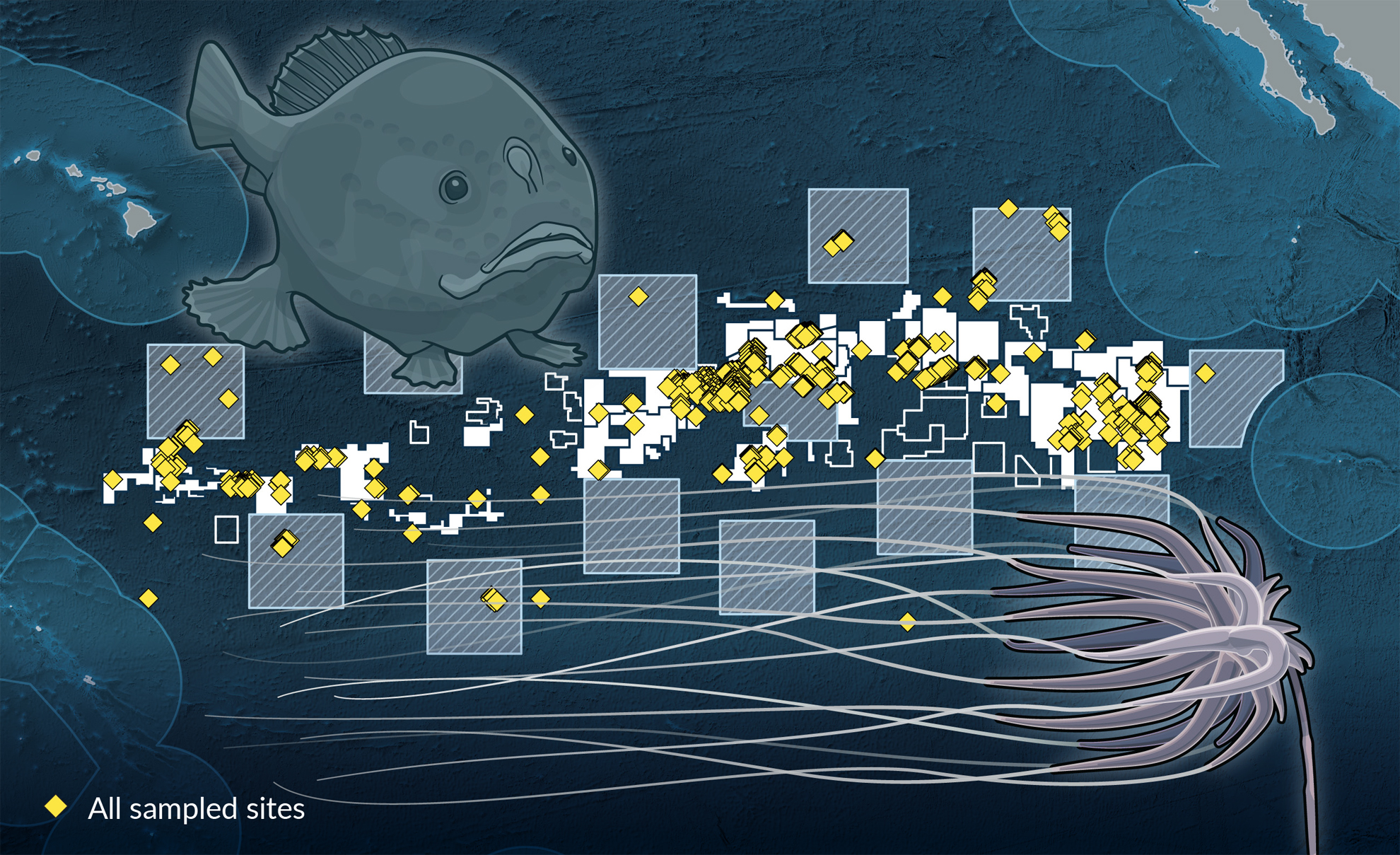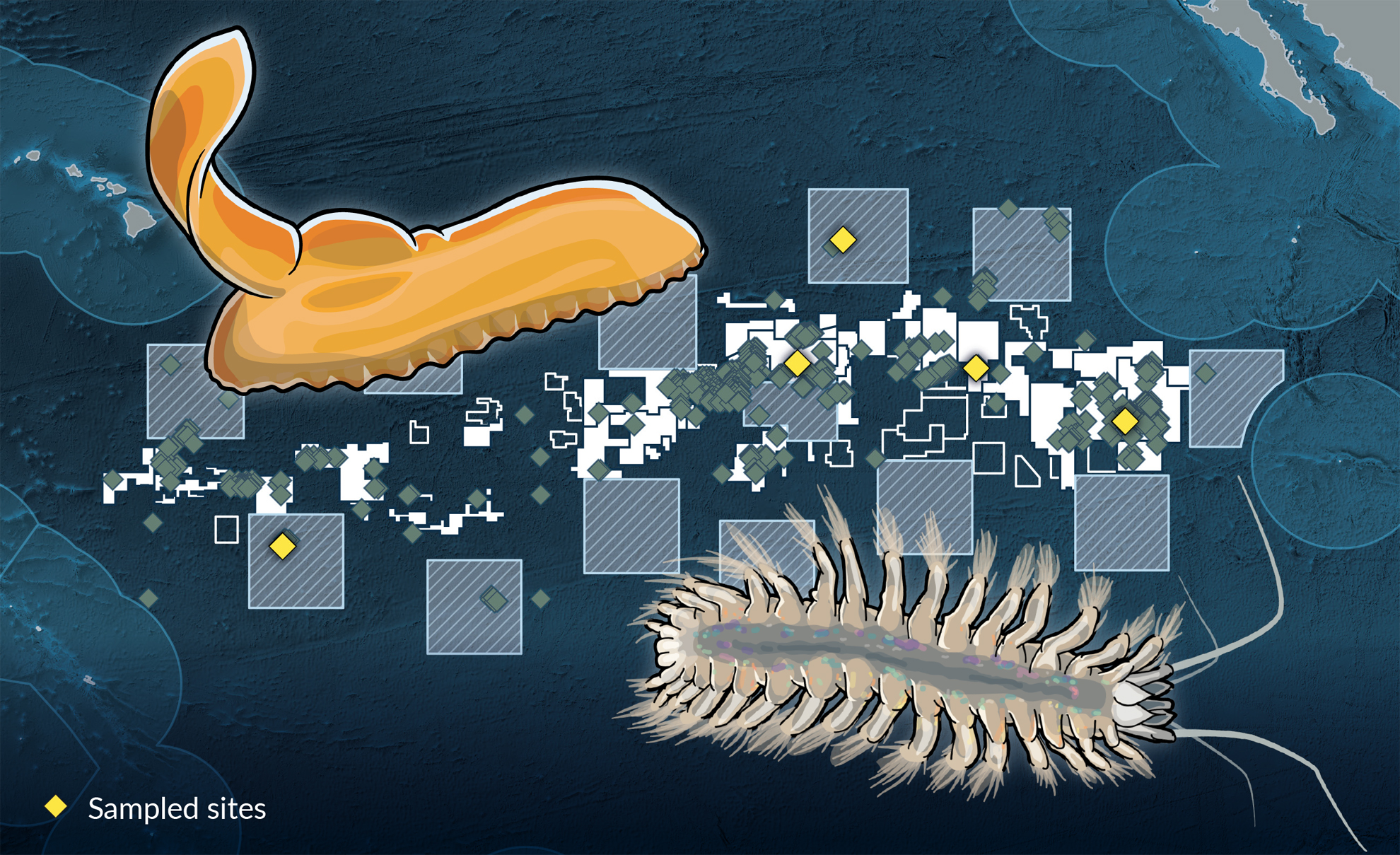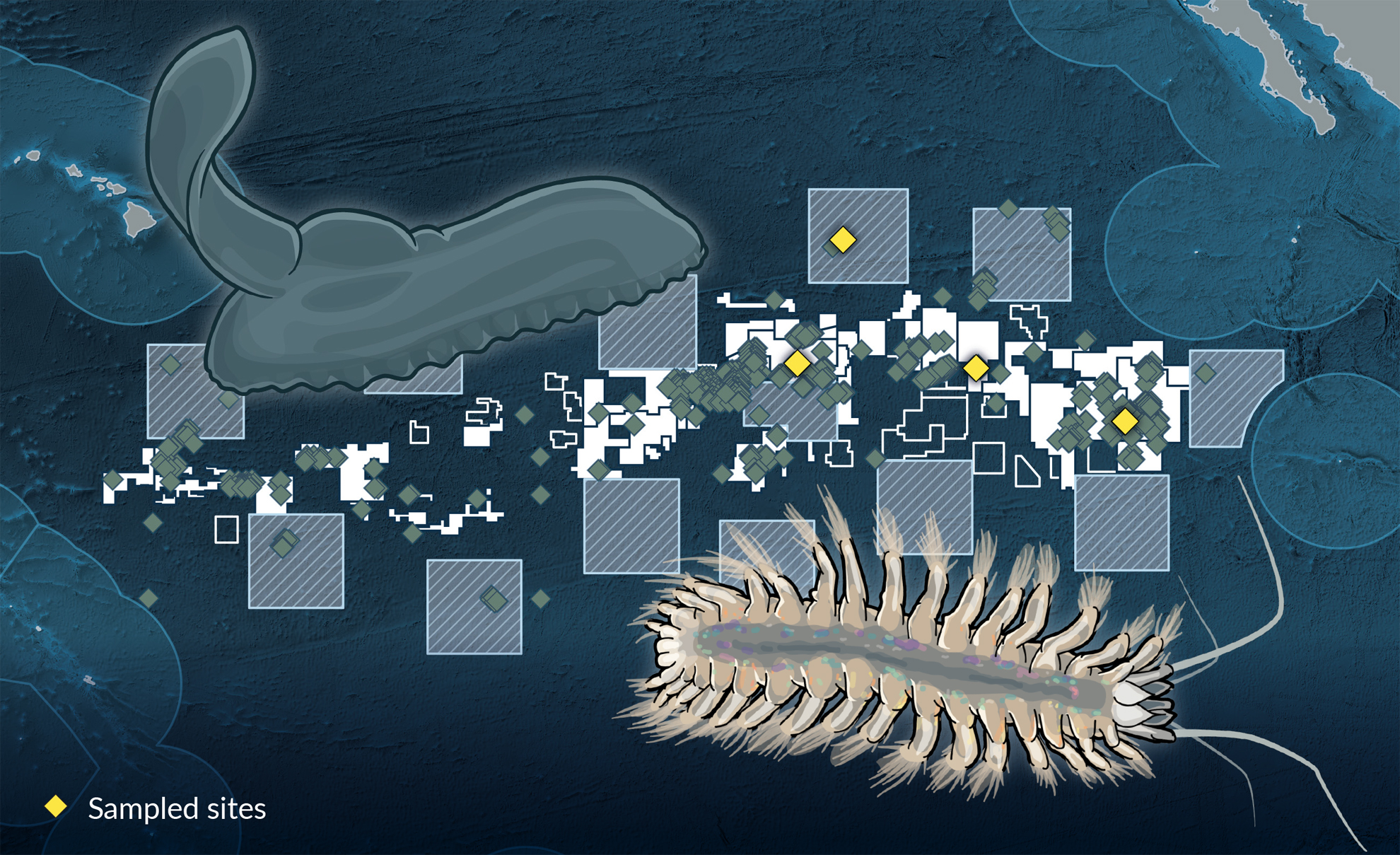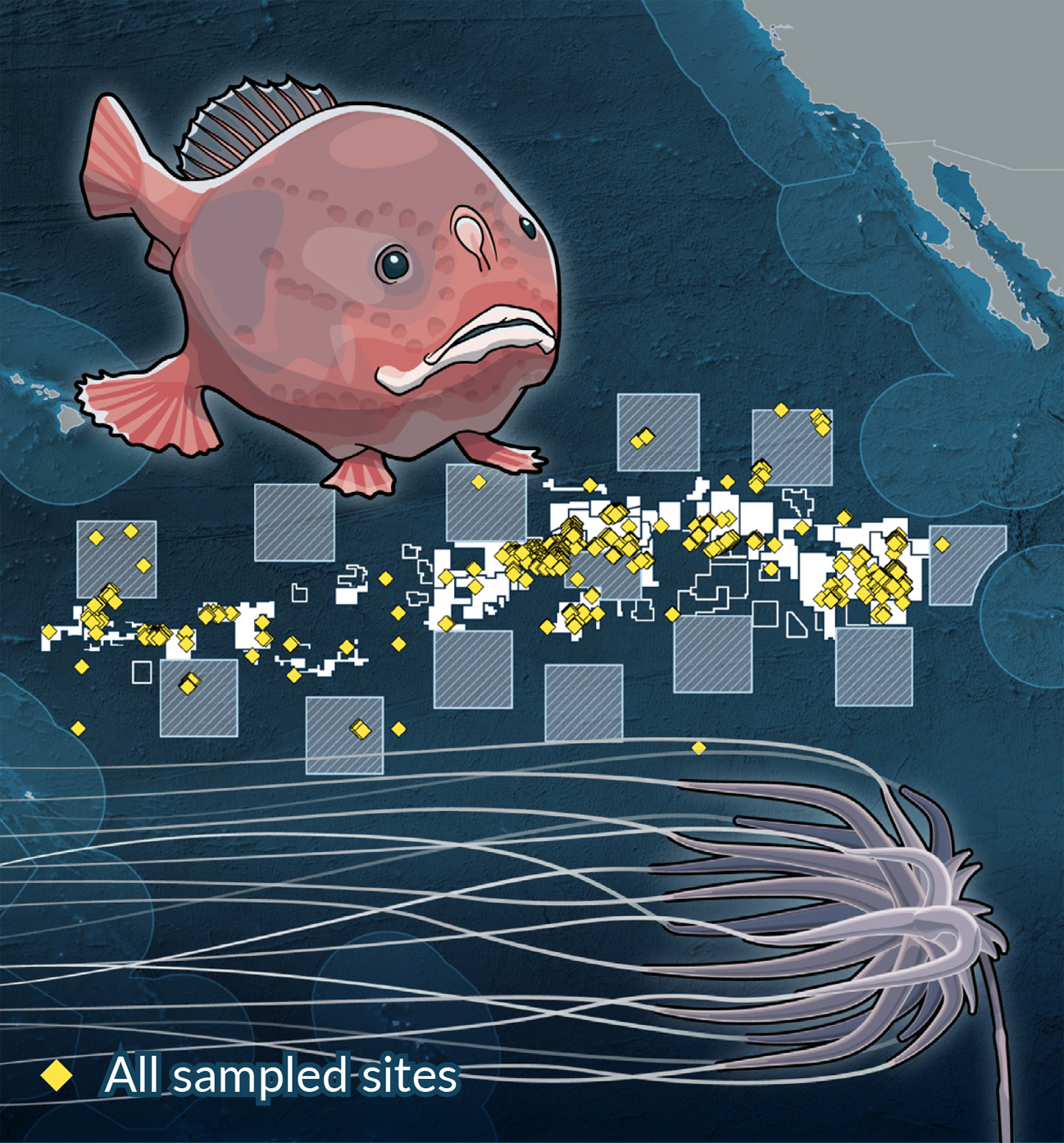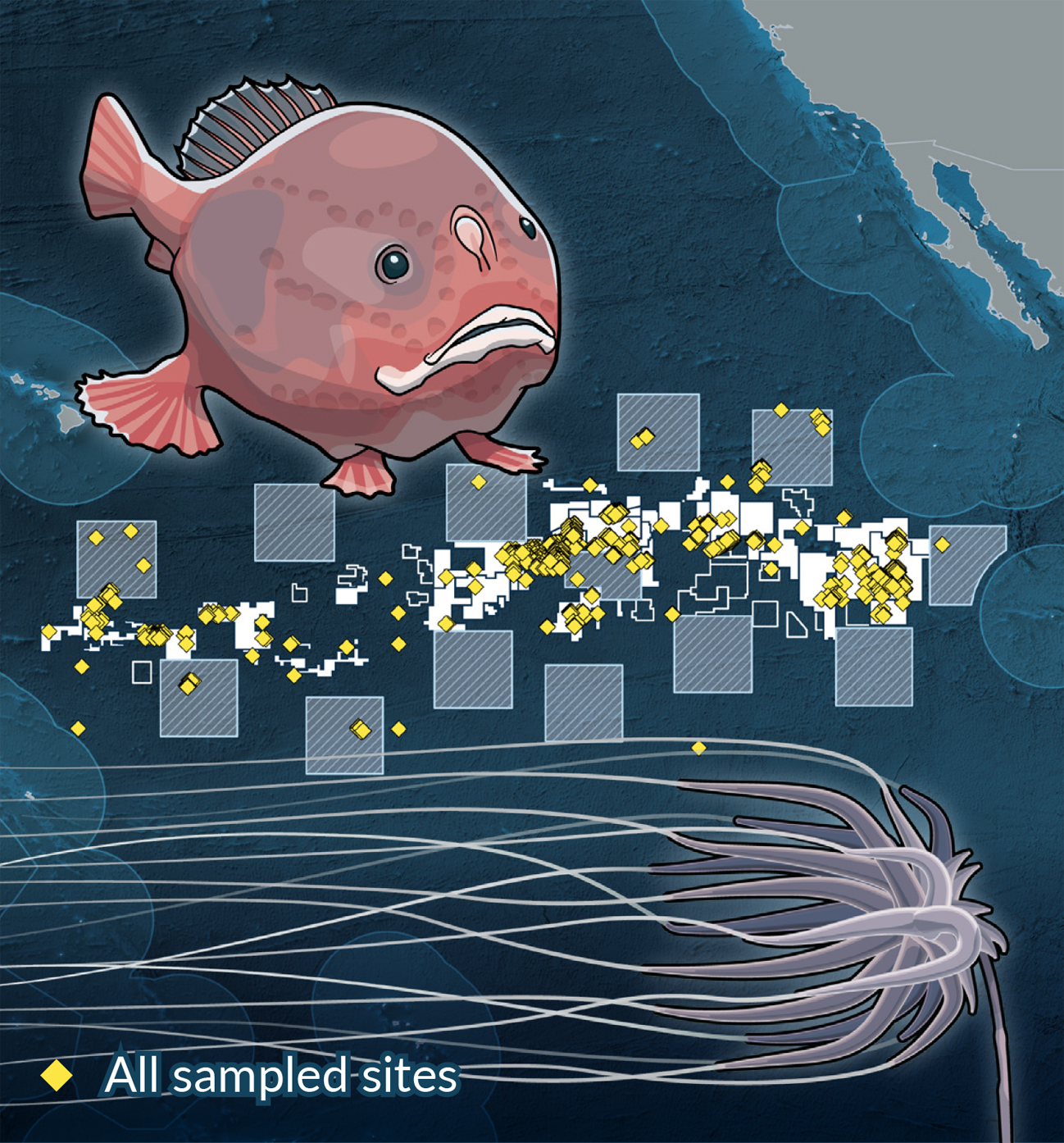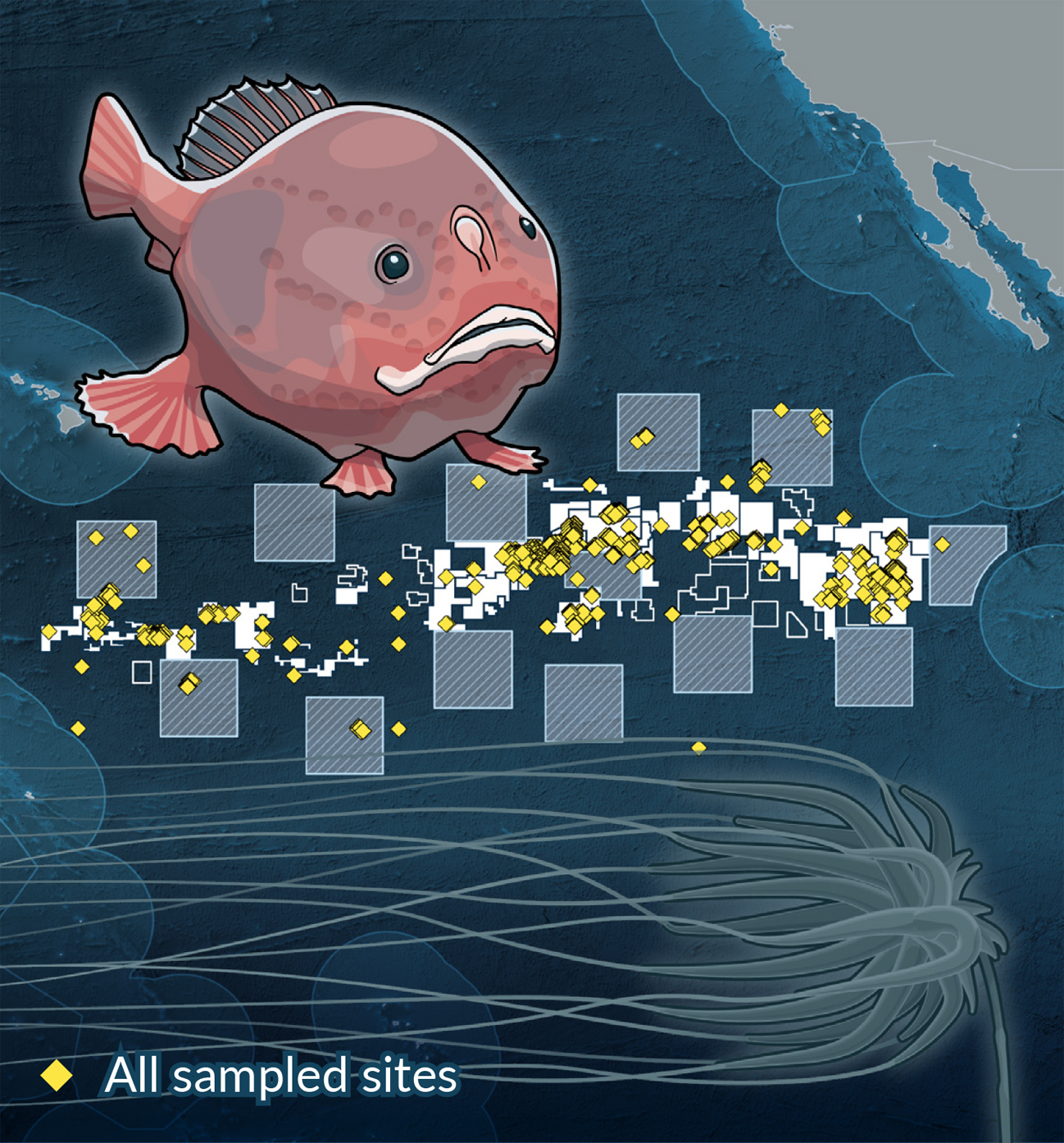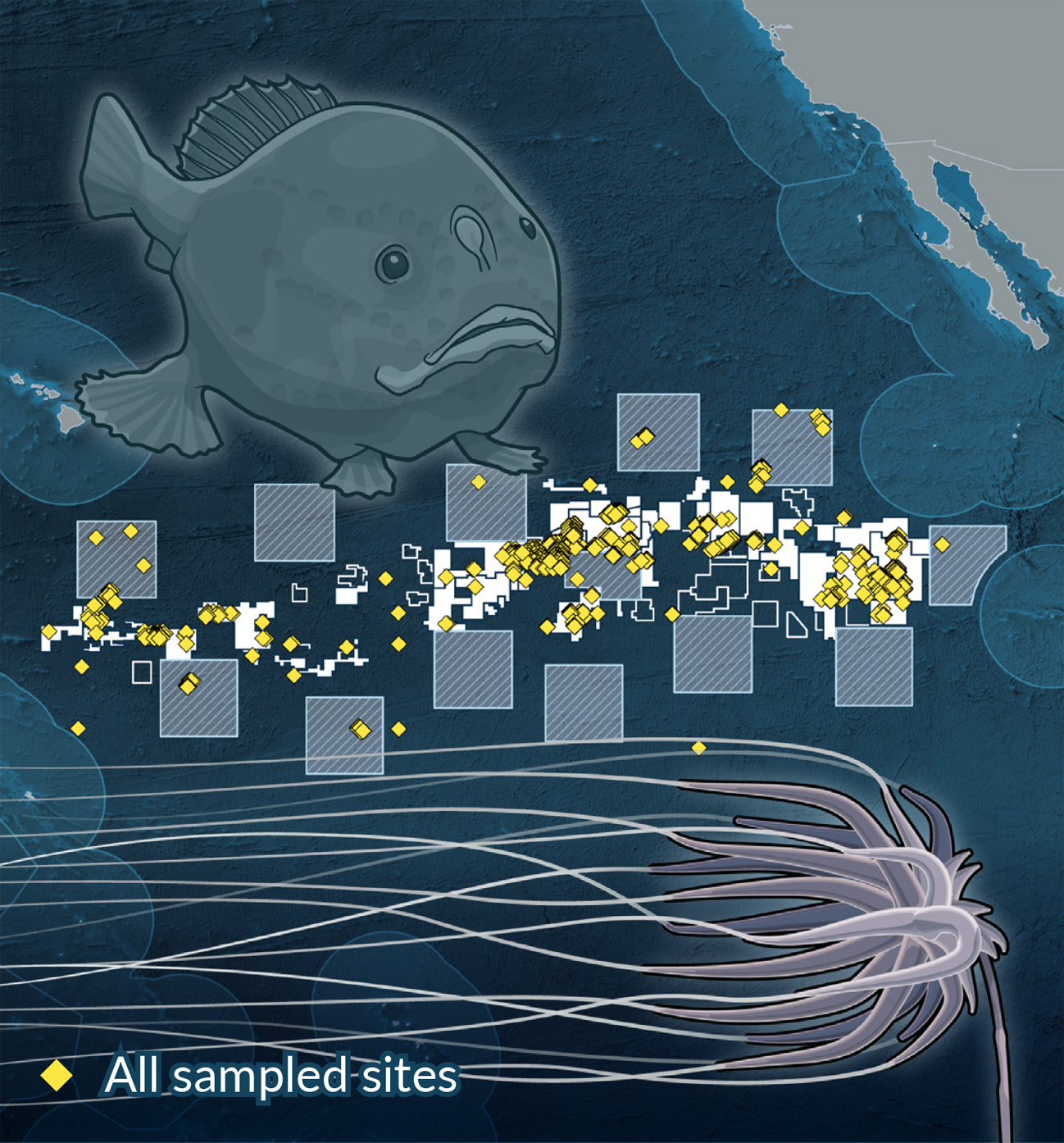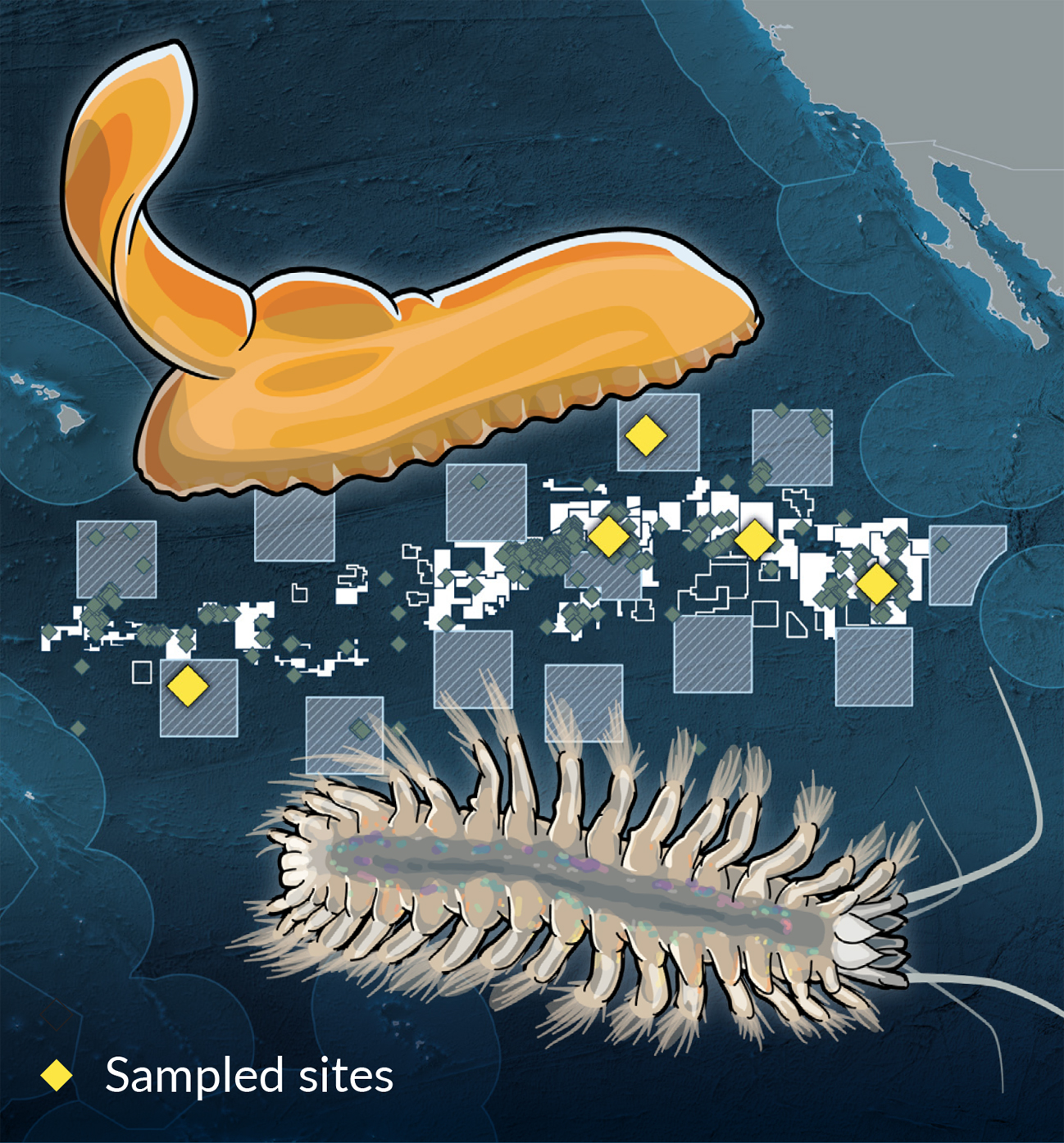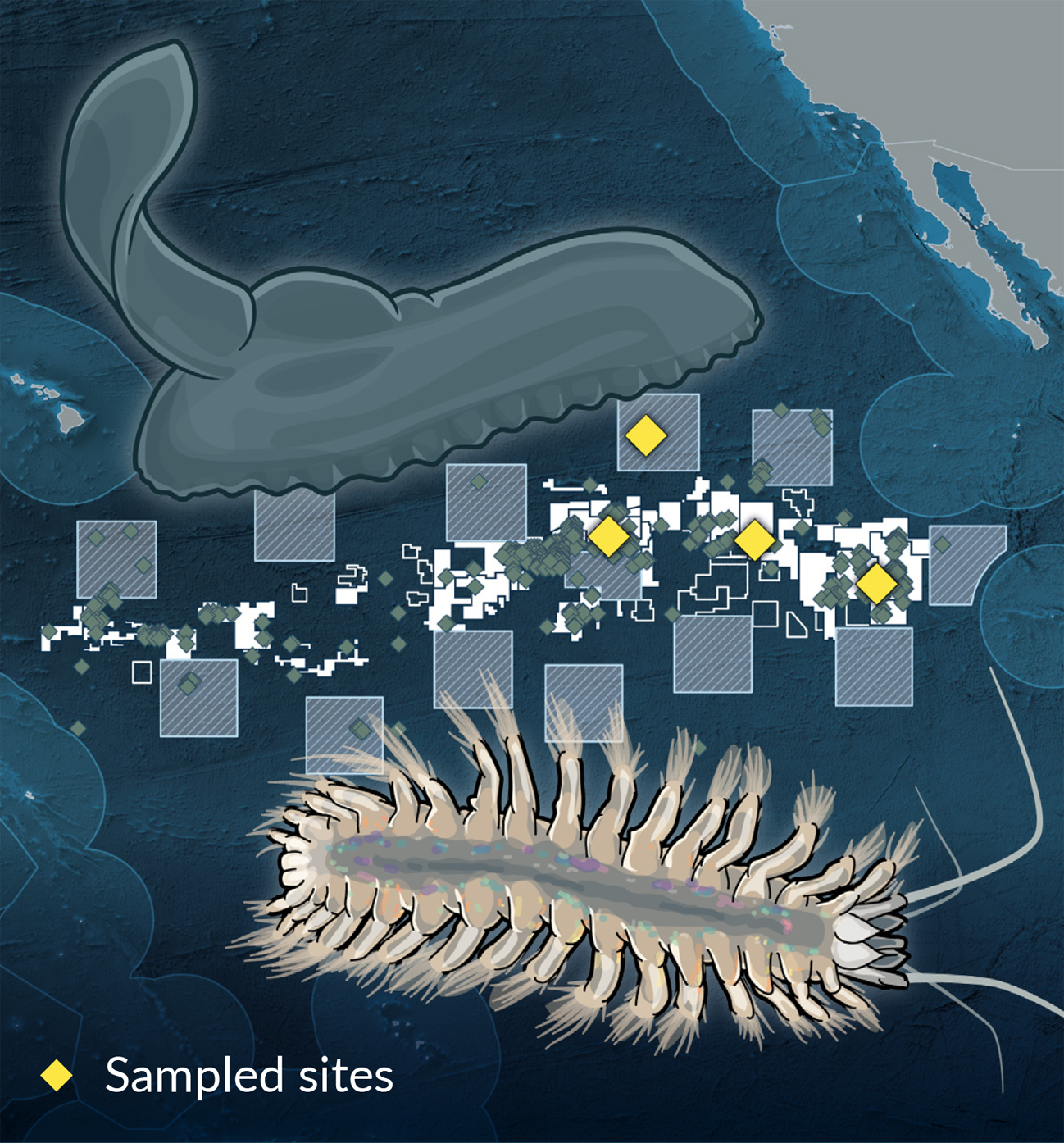Deep-Sea Mining May Harm Thousands of Species—Before They Are Even Discovered
Vast numbers of creatures remain to be found and described in potential mineral extraction area, study finds
New research by the U.K.’s Natural History Museum, funded by The Pew Charitable Trusts has estimated the number of known and unknown benthic animal species—those that live on or near the seafloor—in the Clarion-Clipperton Zone (CCZ), the world’s largest deep-sea mineral exploration frontier. The study provides the first comprehensive list of known benthic species in the CCZ. It further shows that thousands more species remain either undescribed—that is, they have been observed, but scientists have not determined their names or whether they have been found before in the CCZ or elsewhere—or undiscovered.
The International Seabed Authority (ISA), the intergovernmental organization that regulates all mineral activities in areas beyond the jurisdiction of any country, is negotiating regulations that could enable mining in the CCZ as soon as July 2023. Mining activity in the zone could put more than 400 known benthic species and potentially thousands of as-yet-unknown species at risk. More research into the species that live in the CCZ and how they contribute to the wider ecosystem is urgently needed to ensure that mining activity does not irreparably harm this sensitive and important marine environment.
With so little data from the APEIs and the areas targeted for mining, how can the ISA, which manages this area on behalf of the global community, be sure that these areas are sufficient to serve their purpose?
To begin to answer this and many other critical questions, researchers from the Natural History Museum, London, analyzed publicly available survey and exploration data on the CCZ. Based on that information, they estimate that between 88% and 92% of benthic species in the zone are still undescribed and thousands more remain undiscovered.
Figure 1 depicts these findings as a “rarefaction curve,” which enables researchers to estimate and visualize the number of undiscovered species. The clear upward trajectory of the curve shows that thousands of benthic species have yet to be discovered and that significantly more sampling is needed to find and describe them.
The findings of this new study provide further evidence of the significance of the CCZ—and the deep sea broadly—for ocean biodiversity. In addition to the many thousands of benthic species that remain undiscovered in the zone, the data shows that 42% of known deep-sea species were first found in the CCZ. These discoveries, and those yet to be made, highlight the critical need to protect this unique and important region of the global ocean.
The results of this new study clearly show that decision makers and scientists still do not know nearly enough about which species live at the bottom of the CCZ, how big their populations are, or how each species contributes to the wider ecosystem. Without this information, it will not be possible to accurately predict or assess the environmental impacts of seabed mining activities. The International Seabed Authority must not let mining take place unless sufficient scientific information is available to ensure the marine environment’s protection—no matter how long that takes. These findings make clear that far more research is needed before any regulations can be developed that would effectively manage extractive activity in this remarkable part of the ocean.
This visualization is based on the paper “How many metazoan species live in the world’s largest mineral exploration region?” written by Muriel Rabone et al. and published in Current Biology in May 2023. Chris Pickens of Pew spearheaded the conversion of this paper into this data visualization.

